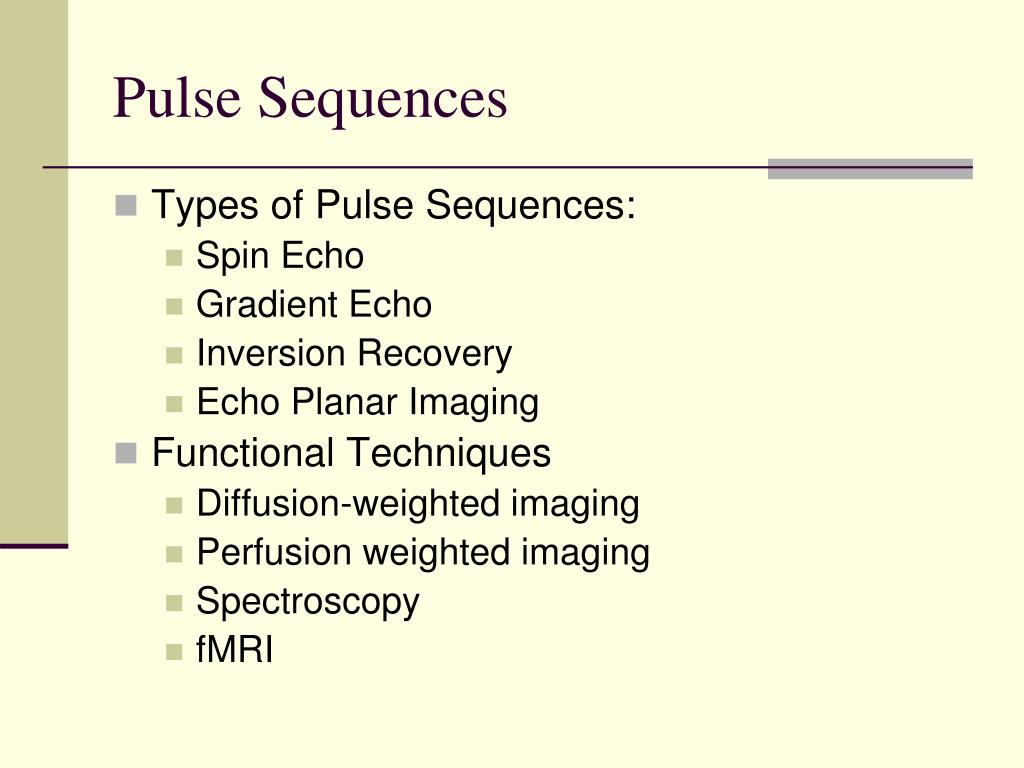

Experiments in vivo showed three-dimensional coverage with excellent spectral quality and SNR. Gradient echo pulse sequences reduce the readout flip angle so that some magnetisation is maintained in the longitudinal direction, whilst a component of. With each repetition, a k-space line is filled, thanks to a different phase encoding. A helpful graphical tool in understanding how imaging pulse sequences work is the pulse sequence diagram, showing how RF and gradient pulses are. This series is repeated at each time interval TR (Repetition time). The resulting signal intensity is proportional to: where: p is the proton density. The pulse sequence is represented as: where N is the number of repetitions.

Key elements of the sequence are insensitivity to calibration of the transmit gain, the formation of a spin echo giving high-quality spectral information, and a small effective tip angle that preserves the magnetization for a sufficient duration. Generic diagram The spin echo sequence is made up of a series of events : 90 pulse 180 rephasing pulse at TE/2 signal reading at TE. The saturation recovery spin echo pulse diagram. In A, spins are aligned and produce a net magnetization in the plus z direction, parallel to the external eld. In the pulse sequence timing diagram, the simplest form. It uses 90 radio frequency pulses to excite the magnetization and one or more 180 pulses to refocus the spins to generate signal echoes named spin echoes (SE). The pulse sequence consists of a small-tip excitation followed by a double spin echo using adiabatic refocusing pulses and a “flyback” echo-planar readout gradient. Princeton University, Physics 311/312 NMR andthe Spin Echo 3 z z z z z z z z 1 B D H y C E G F H A y x x x x x x y y y y Figure 2: The formation of a spin echo using the Carr-Purcell pulse sequence in the rotating frame. (SE) The most common pulse sequence used in MR imaging is based of the detection of a spin or Hahn echo. In this paper, the design and testing of a pulse sequence for rapid magnetic resonance spectroscopic imaging (MRSI) of hyperpolarized 13C is presented. To differentiate between the injected compound and the various metabolic products, an imaging technique capable of separating the different chemical-shift species must be used. Dual echo and multiecho sequences can be used to obtain both proton density and T2-weighted images. The pulse sequence timing can be adjusted to give T1-weighted, proton density, and T2-weighted images. Dynamic nuclear polarization of metabolically active compounds labeled with 13C has been introduced as a means for imaging metabolic processes in vivo. Spin-echo pulse sequences are one of the earliest developed and still widely used (in the form of fast spin echo) of all MRI pulse sequences.


 0 kommentar(er)
0 kommentar(er)
